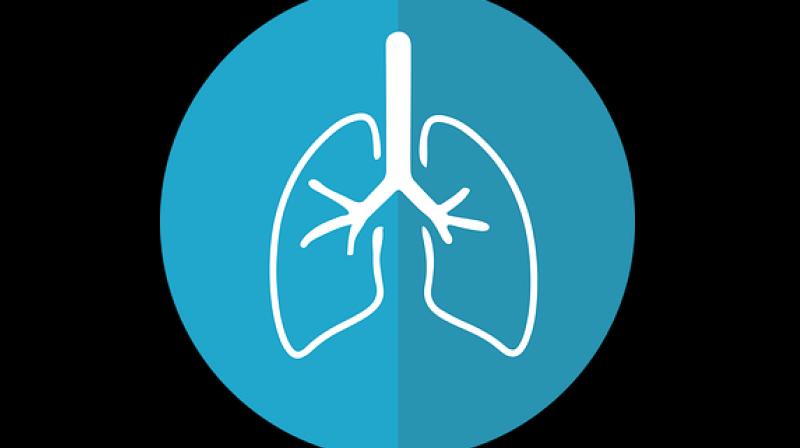Allergies can lead to sinusitis and bronchial asthma
Here is how allergies can lead to sinusitis and bronchial asthma.

The human airway has been traditionally divided into upper and lower segments. Anatomically, the two airways have a common respiratory epithelium and a common mucosal susceptibility to disease. The upper and lower airways are functionally linked: stimulation of the nasal mucosa may result in changes in bronchial hyper responsiveness.
Diseases of the upper and lower airway may, however, coexist; rhinitis and bronchial asthma are good examples. As many as 80 per cent of patients with asthma have rhinitis symptoms, whereas 5 per cent to 15 per cent of patients with perennial rhinitis have asthma. Dr Gaurav Chaturvedy, Director, ENT at Jaslok Hospital and Research Centre talks about the symptoms and treatment for the same.
A number of studies from around the world have shown that:
- 70-90 per cent of patients with asthma have concomitant rhinitis;
- 40-50 per cent of patients with allergic rhinitis have concomitant allergic asthma.
Sinusitis has been shown in different studies to occur in up to:
- 25-70 per cent of adults with asthma
- 20-60 per cent of children with asthma
- 50per cent of patients with inhalant allergies
- The coexistence of sinusitis and asthma, especially in children, is known, and in allergic patients, infection of the paranasal sinuses is frequently implicated in the development of the disease of the lower respiratory tract.
- To occur in more than 50 per cent of children with asthma, sinusitis and/or adenoiditis have been shown by endoscopic assessment.
- The presence of allergic rhinitis before seven years of age-predicted the subsequent development of asthma. The presence of allergic rhinitis at the age of seven was associated with an approximate three-fold risk of subsequently developing asthma compared to those without allergic rhinitis.
- Infected sinuses are a reservoir of proliferating bacteria and are frequently associated with worsening of asthma.
- Inhalation of endotoxin has been shown to induce airway narrowing and hyperresponsiveness in patients with asthma and endotoxins from the cell walls of gram-negative bacteria have potent pro-inflammatory properties.
Mechanisms Leading to Combined Allergic Rhinitis and Asthma Syndrome
Physical
- The upper respiratory tract functions as a physical filter; Failure of some upper airway function may result in an alteration to the homeostasis of the lower respiratory tract.
Allergen exposure
- Seasonal allergens, for example, grass or tree pollens, can cause intermittent symptoms, e.g. intermittent/ seasonal allergic rhinoconjunctivitis, while allergens which are present year-round, such as animal danders and house dust mites, are more likely to cause persistent symptoms of rhinitis and/or asthma.
- Mouth breathing, when the nasal obstruction is present, excludes the upper airway filter, thus increasing the possibility of lower respiratory tract symptoms.
- Environmental factors like smoking increased the risk of the development of asthma by approximately three-fold.
Immunologic
- Inflammation of the nasal and bronchial mucosa plays a critical role in the pathogenesis of allergic asthma and rhinitis.
- The immunopathologic response, chronic allergic inflammation, is similar in the upper and lower airways.
- Allergic rhinitis and asthma are interlinked by an immunologic response to airborne allergens. This is evidenced by peripheral blood eosinophilia.
Treatment
- Intranasal glucocorticoids improve allergic rhinitis symptoms but also improve symptoms of asthma and reduce bronchial hyperresponsiveness.
- H1 antagonists may also improve concurrent mild seasonal asthma symptoms.
- Administration of an antihistamine plus pseudoephedrine has been shown to improve asthma symptoms.
- In children, upper respiratory infections and asthma exacerbations can be controlled by continuous antihistamine treatment.
- To improve lower airway symptoms, antibiotic therapy for sinus disease in children has been shown.
- Improvement in asthma has been shown after sinus surgery in patients with either nasal polyposis, or rhinosinusitis, and asthma.
- Allergen immunotherapy (allergy vaccination) is an important therapeutic tool for the management of Combined Allergic Rhinitis and Asthma Syndrome. Immunotherapy can modify the natural history of the disease and maintains its effects for years after discontinuation.
- Avoid smoking.
- Use room humidifiers/purifiers.

